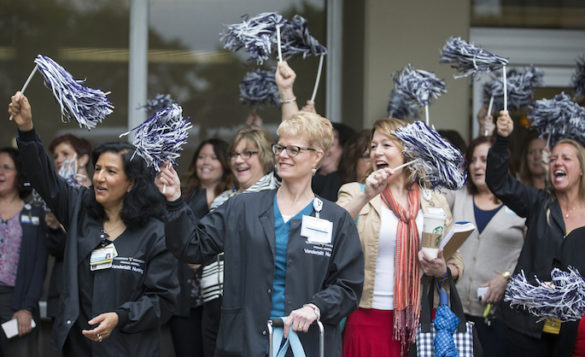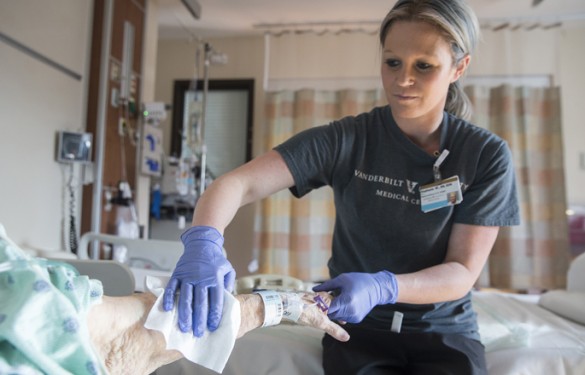Providing the best care for patients and their families also means making patient handling safety a priority.
That’s why Vanderbilt University Medical Center Nursing and the Occupational Health Clinic are piloting initiatives in key clinics and departments starting this month, with a Medical Center-wide rollout later this year.
“This initiative is vital to the health of our nurses and our organization,” said Marilyn Dubree, MSN, R.N., executive chief nursing officer. “We want to provide the support, training and technology to make sure Vanderbilt nurses remain injury-free. It is not a sign of weakness to rely on teams, technology or equipment to safely move patients, it’s a necessity.”
Nationwide, 12 percent of nurses experience a career-ending injury due to improper patient handling.
“We launched a very successful safe patient handling system in 2006 that dramatically decreased injuries and reduced restricted and lost time,” said Melanie Swift, M.D., director of the Occupational Health Clinic. “Over the years, we’ve seen our injury numbers creep up, so the time is right to ask our nurses and caregivers to refocus on this issue.”
While many scenarios come to mind, the most common way nurses are injured is part of almost every patient encounter — repositioning the patient in his or her bed.
Historically, critical care areas have the highest injury rates since patients are intubated, sedated or less ambulatory than in other units.
Mamie Williams, Safe Patient Handling director, describes the situation like this: “The Occupational Safety and Health Administration has talked about patients and pointed out that they are not like packages. They don’t have handles, their weight is not evenly distributed and they can be confused or agitated when they need to be moved. Nurses are bending over a bed and so are not standing up straight. That puts additional pressure on a caregiver’s body.”
The goal of this initiative is to refocus on all the resources available to staff, which includes equipment training, using available equipment and completing patient safe handling assessments.
“It’s about nurses and care partners protecting patients and themselves,” said Williams. “Nurse educators, clinic/department champions and the Occupational Health Clinic are all places to go for more training and support.
“We don’t want anyone to hurt themselves on the job, and it’s important to realize that there are long-term consequences to not using the equipment,” said Williams. “Our nurses and caregivers are too valuable to lose to avoidable injuries.”















